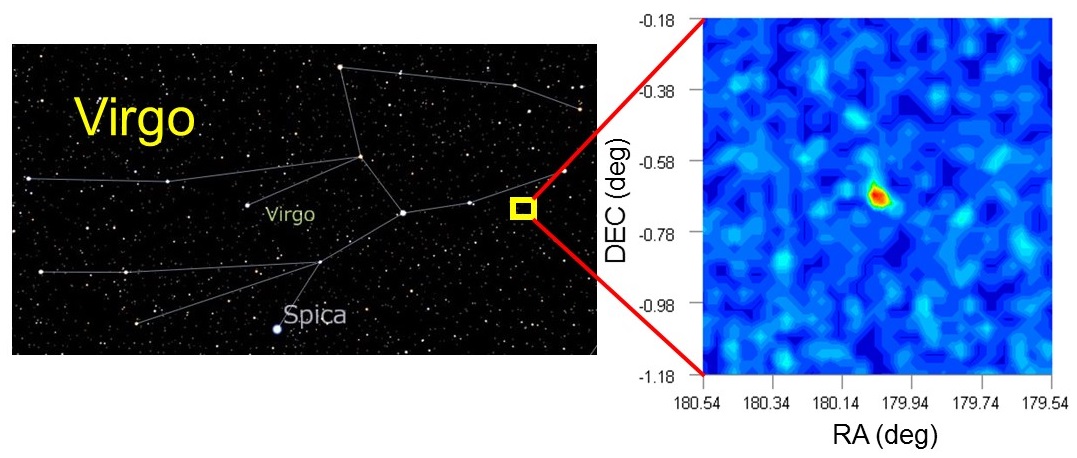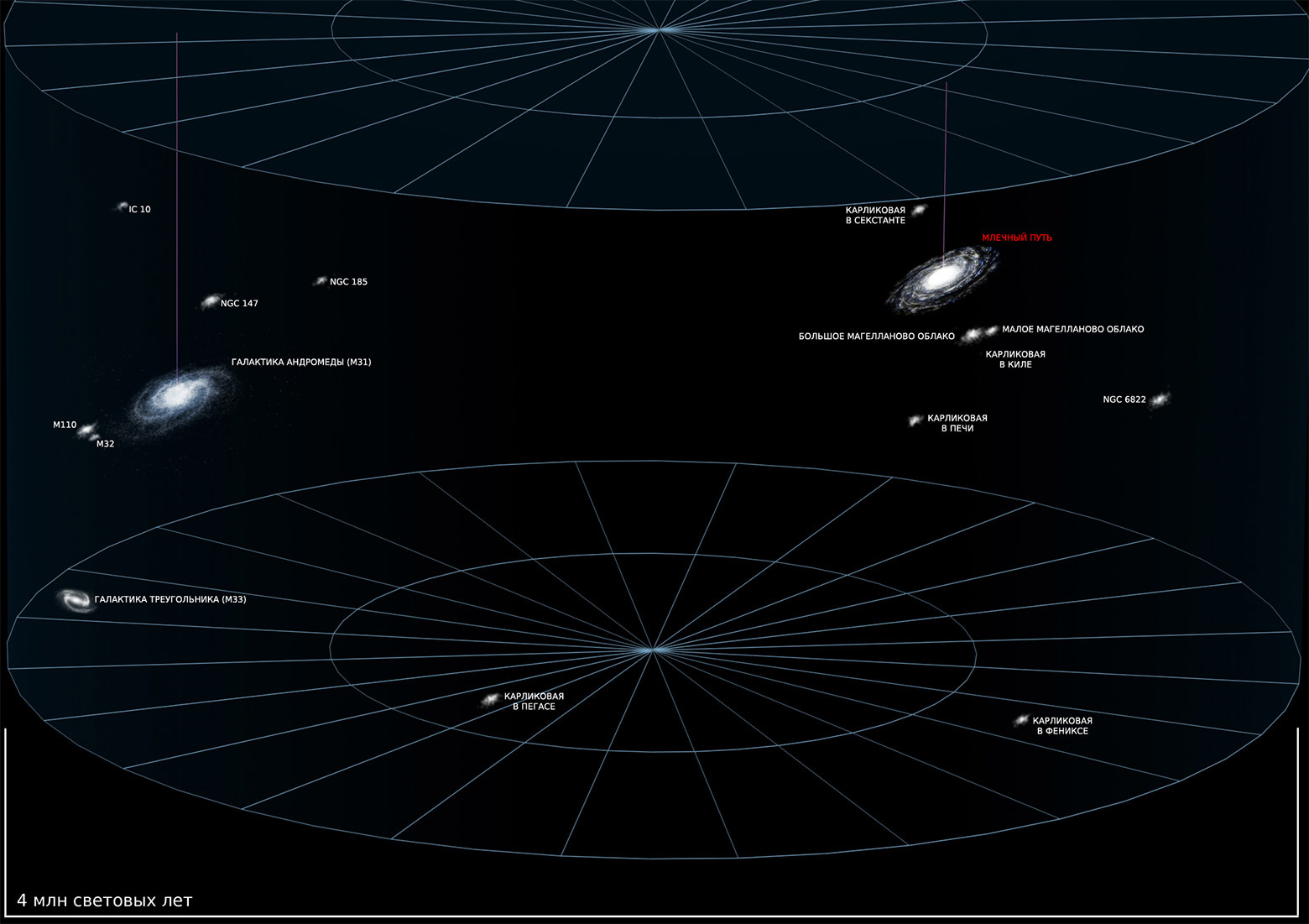Near the Milky Way, a very dark satellite galaxy is seen.

Galaxy satellite Virgo I
An international group of astronomers led by Daisuke Homma from the Astronomical Institute at Tohoku University (Japan) discovered an object that accompanies the Milky Way on its path in the Universe (note: our Galaxy together with neighboring Andromeda and the Triangle form a Local Group that moves synchronously in an unknown direction, probably under the influence of some kind of supermassive object ).
The find is classified as a dwarf spheroid galaxy Virgo I. Its size is only 248 light years in diameter, and the distance from the Sun is 280,000 light years.

Local group
')
Although the direction of motion of the Local Group is not known, we can study our small satellites — dwarf spheroidal galaxies (dSph) that accompany the Local Group in its motion. The study of these galaxies makes it possible to better understand the nature of gravity and the essence of dark matter, which presumably holds these galaxies together.
About 50 galaxy satellites have already been discovered near the Milky Way, and about 40 of them are dull, that is, largely composed of dark matter. These 40 galaxies belong to the class of dwarf spheroidal galaxies.

The Milky Way satellite galaxies, including the Virgo I galaxy. The blue squares indicate BMO and IMO, noticed by our ancestors even in prehistoric times
The discovery of the Japanese astronomers Virgo I is one of the darkest galaxies among all discovered to date. This means that the proportion of dark matter in it is very large. Actually, this fact explains the fact why this galaxy has so far not been able to notice.
After such a discovery, scientists believe that our Milky Way may have many more satellites than we thought. The number of galaxies that are almost invisible to our eyes, consisting mainly of dark matter, can be very large around us. Maybe there are hundreds of such galaxies around us.
The discovery of a large dark galaxy right next to us is the key to solving the problem of missing satellites . In fact, based on numerical cosmological modeling, dark matter in the Universe should be distributed in a hierarchical cluster, generating galactic halos of smaller and smaller size. However, the real observations of astronomers do not give us the picture that the theory predicts. According to the observations, in space an ample number of normal-sized galaxies for distribution, predicted by the mathematical model, but clearly not enough dwarf galaxies. The number of dwarf galaxies we observe is about an order of magnitude less than it should be. See the calculations of Anatoly Klypin and Andrei Kravtsov from the State University of New Mexico (USA) with colleagues.
For example, the current list of dwarf galaxies accompanying the Milky Way has 55 galaxies, while the calculation of Klypin predicts about 500.
One possible explanation for the problem of missing satellites is that satellite galaxies consist mostly of dark matter, and therefore they are very difficult to observe. Some of the super-dark galaxy satellites actually consist of about 99.9% of dark matter (the mass-luminosity ratio is about 1000 ), and the new discovery of Japanese astronomers once again confirms this theory.
Until recently, scientists found very few galaxies with an absolute magnitude of −8 in the optical range (for comparison, the absolute magnitude of our neighbors in the Local Group is as follows: Andromeda has –21.77, and the Big Magellanic Cloud has –18.35, Small Magellan Clouds (-17.02). The absolute magnitude of a star is defined as the apparent magnitude of an object, if it were located at a distance of 10 parsecs from the observer.
So, galaxies with absolute magnitudes from −8 were very difficult to search on telescopes with a diameter of 2.5 m to 4 m. That is why only satellite galaxies located relatively close to the Milky Way were noticed. For comparison, in the Virgo I dwarf galaxy, the absolute magnitude is only −0.8. Virgo I was discovered using the Subaru Telescope 8.2-meter telescope in Hawaii using a giant 820-megapixel digital camera Hyper Suprime-Cam .

Hyper Suprime-Cam digital camera versus 158 cm tall girl
Vitro I is one of the darkest galaxies found so far. In this discovery, it is remarkable that it gives reason to hope for the discovery of other dwarf spheroidal galaxies near the Milky Way, which should be around 500 pieces. Perhaps in the near future will be found many such objects. Their mass and location will allow a better understanding of how dark matter is distributed in the Universe. In particular, next to our galaxy. How was the Milky Way formed and what is the role in this dark matter.
The scientific work was published on November 14, 2016 in the Astrophysical Journal and is publicly available on the website arXiv ( arXiv: 1609.04346 ).
Source: https://habr.com/ru/post/399299/
All Articles